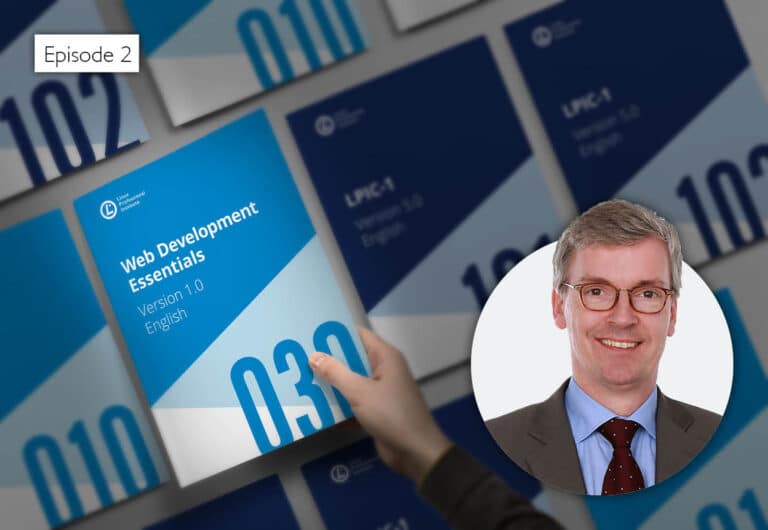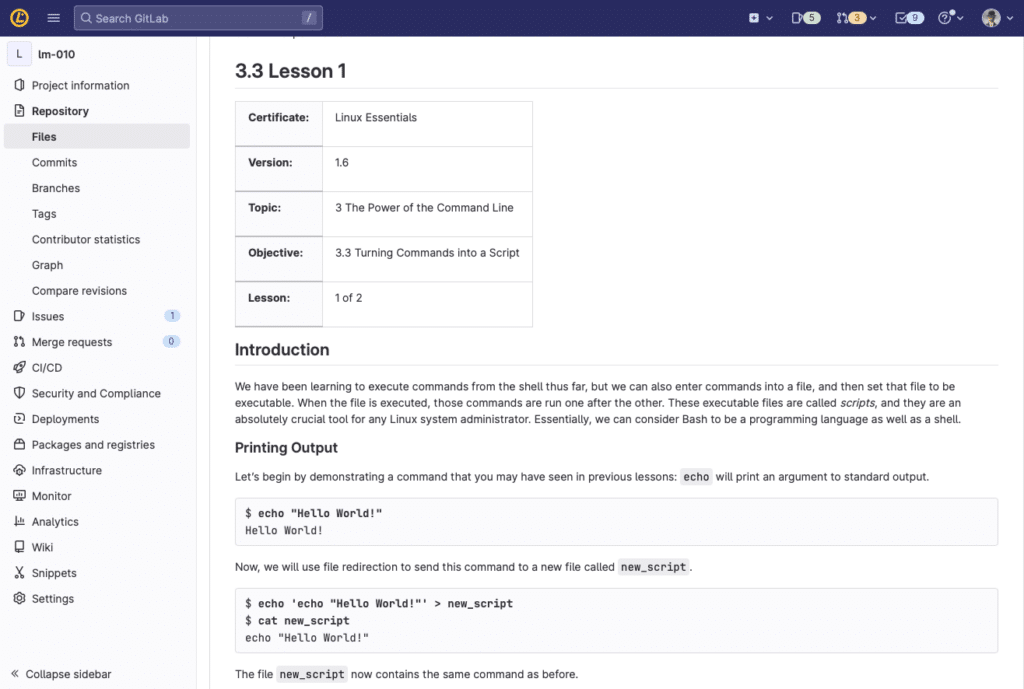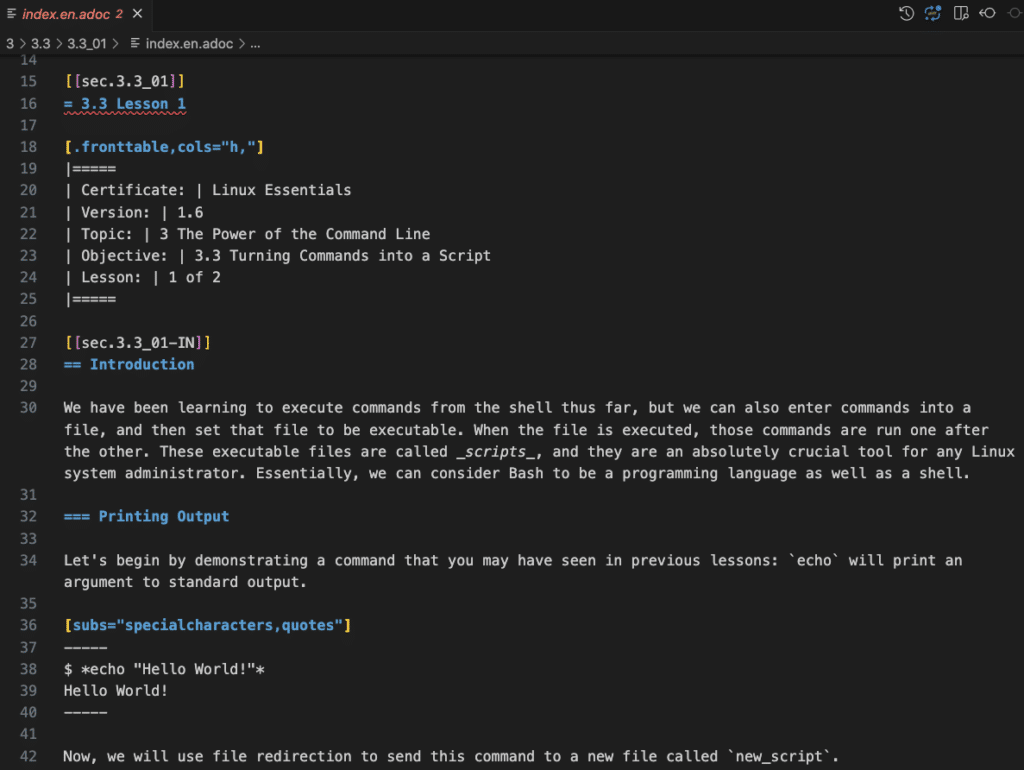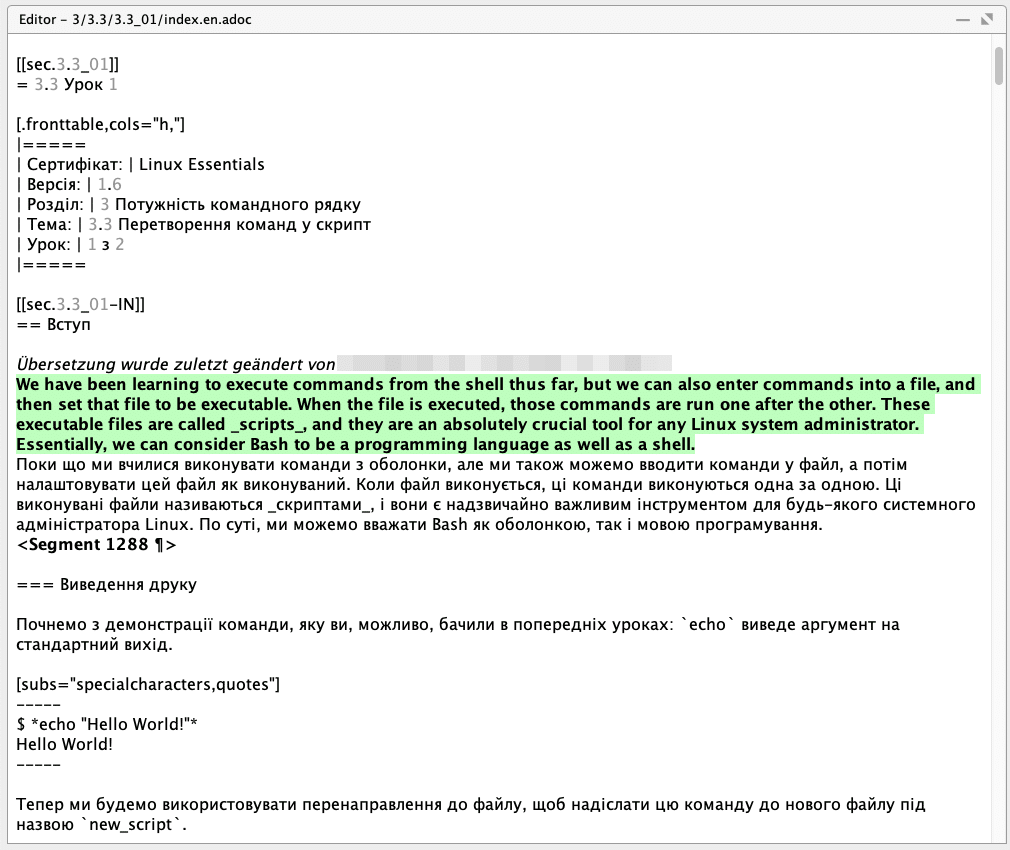LPI Learning Materials – Becoming Part of the Project

An earlier article presented the LPI Learning Materials, which guide teachers and students in preparing for the LPI exams. These materials are developed by volunteers all over the world. The project has to manage numerous subprojects, support many publishing formats and languages, and update texts quickly.
This article explains how volunteers do this work, so that you can consider joining us. We rely on uniform processes and on free and open source (FOSS) tools.
Read on – you will find out how we work and how you become part of the team!
Ways to Help
When developing the Learning Materials, we define three roles with different tasks and tools to use: authors, reviewers, and translators.
Author
Authors, through training or professional experience, have in-depth knowledge of the relevant technologies for a Learning Materials lesson and are able to convey this knowledge to prospective exam candidates in an appropriate manner. As an author, your job is to present the content stated in the official learning objectives of an exam in a factually correct and didactically appealing manner. The term “didactic” here means that you have sympathy for a novice’s point of view and can lead readers easily, enjoyably, and productively through the learning process. It’s important to place explanations in a practical context and to build on each other: Examples and analogies are just as important as clever transitions and concise exercises.
The actual text work is done in Git repositories. If you don’t have any experience with this version control system, that’s no problem: You need only a few commands on the command line, which we explain in detail in our style guide. Alternatively, you also have access via a web interface (Figure 1).

Figure 1: GitLab’s web interface
Each lesson you write corresponds to a plain text file in AsciiDoc format, a simple markup language that our style guide also describes how to use. The principle behind markup languages like AsciiDoc is that you write information about structure and format directly into the text in the form of defined control characters (Figure 2). This offers the advantage that a text thus formatted can be further processed in almost any way – for example, for publication in HTML on the website or as a PDF for printing. In addition, each author and reviewer chooses the tool (editor, IDE,…) they use to create the text.

Figure 2: Lesson file in text editor
In short, the technical hurdles to becoming an author are very low – what matters is your desire to pass on your knowledge in the format defined for the Learning Materials!
Reviewer
Reviewers support the authoring effort by revising finished drafts. A reviewer must be able to check technical accuracy as well as help with the didactic approach: If necessary, parts must be rearranged, explanations added, and examples adapted. This gives the text its almost final form.
You also work directly on the text in the Git repository: This means that your changes are always traceable without anything breaking or different versions of the text having to be sent back and forth. Authors and reviewers work closely together, and the tasks are so similar that helpers often take on both roles in a project, i.e. writing some lessons and reviewing others.
Translator
A translator translates a project from English — e.g. the Learning Materials for the “Linux Essentials” exam — into another language. Usually, the translator takes on a complete set of Learning Materials. This has proven useful for a translation’s consistency.
The translation projects are also individual Git repositories, but the actual translation work is done in the open source tool OmegaT (Figure 3). We provide the same reassurance for learning OmegaT as for the tools previously discussed: If you have no experience with the tool and process, we will be happy to help you with installation and the first steps!

Figure 3: Translating a lesson in OmegaT
The principle is simple: Open the file to be translated (e.g., a lesson) in OmegaT and the tool automatically divides it into short sections (so-called segments). As a translator, you “jump” from segment to segment and write your text immediately below the highlighted original, meticulously maintaining the respective markup. Changed or not yet translated segments are easy to find. As with authoring and reviewing, we avoid juggling different versions of text through the central administration in Git.
Next Step: Contact Us!
Dozens of people have created Learning Materials as authors, reviewers, and translators. They can join us and be productive because tasks and tools are manageable and processes are clearly defined. The most important prerequisite is that you are confident in your knowledge of the objective you are documenting, both technically and didactically.
Before you offer your services, make sure you have the necessary time: Experience has shown that writing a lesson with around 4,000 words works best if you concentrate on it within a manageable period of time. Since you have the necessary specialist knowledge, research is hardly necessary – your work consists of correct and comprehensible presentation, so that a first draft of a lesson should be available within about 4 weeks.
The best way to contact us is through this short form. The more you can tell us about your technical expertise and possible experience in writing, reviewing, and translating, the better!
We look forward to hearing from you and to the joint development of our Learning Materials!
